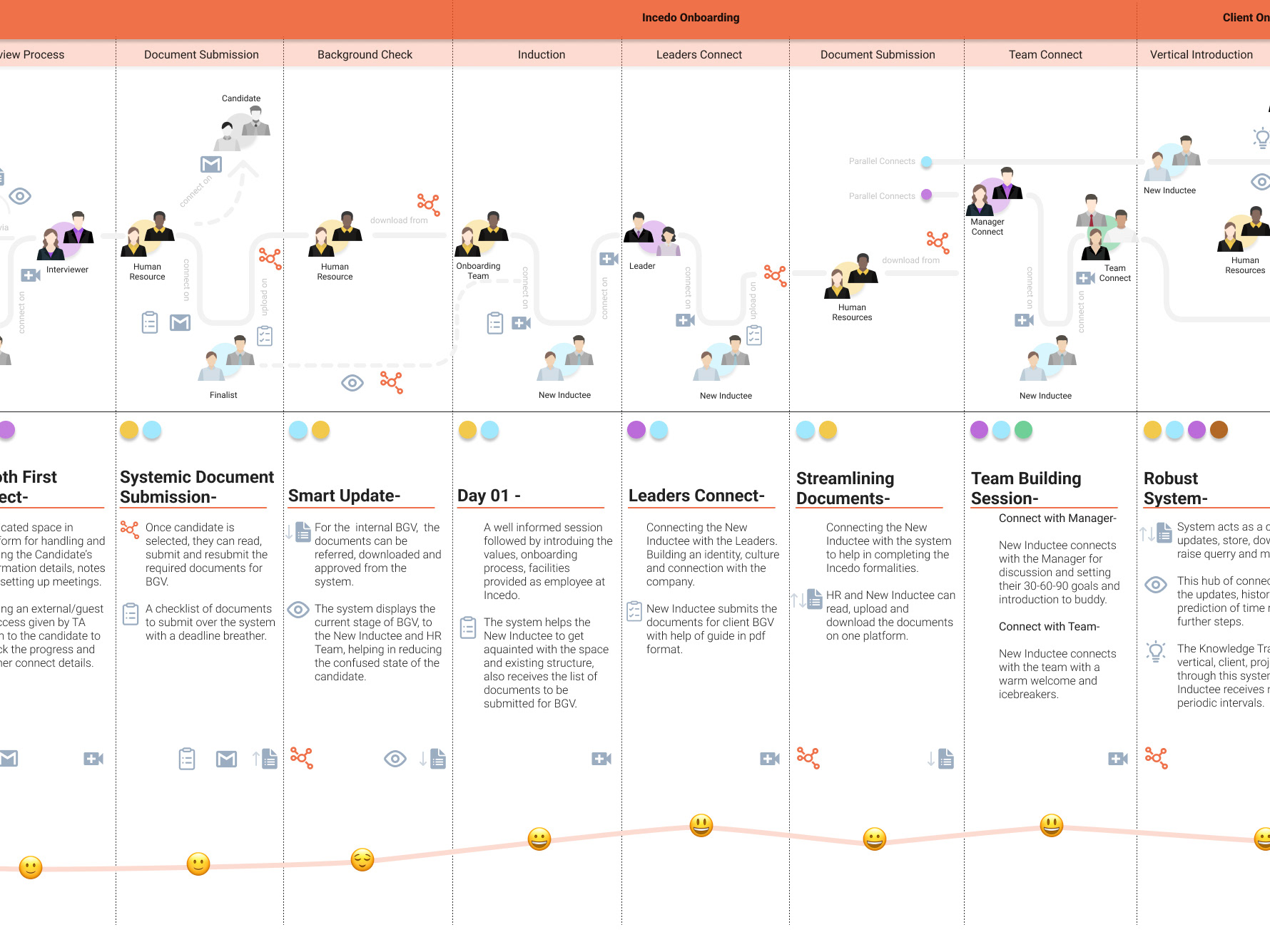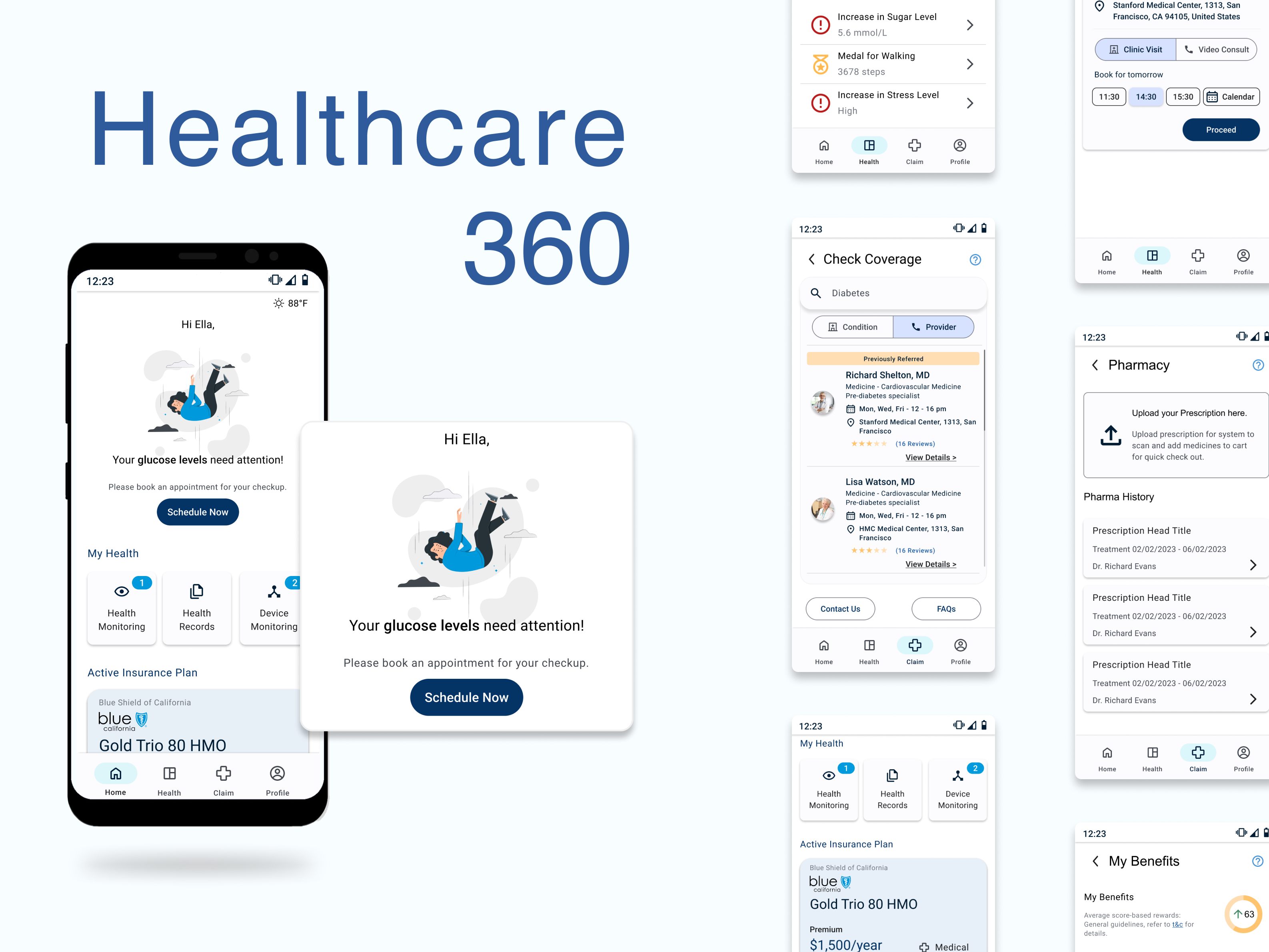Approach
This project was a two-month team effort to design an in-house product for Incedo.
We followed an Agile process, collaborating closely with business analysts, product managers, and developers to ensure the platform addressed both business needs and technical requirements.
Business Impact
20% Reduction in operational overheads
50% Improvement in Salesforce adoption
15% Enhancement in data quality and AI driven insights
The Problem
Complex Data Workflows Slowing Business Impact
Enterprise data powers decision-making, yet managing it efficiently remains a challenge. Data teams, from stewards and engineers to data scientists, grapple with fragmented systems, software sprawl, and inconsistent workflows, spending excessive time reconciling, monitoring, and remediating data issues.
Meanwhile, business users and leaders demand timely, accurate, and actionable insights, but rising expectations collide with slow processes and incomplete visibility. Without a unified approach, enterprises face high operational overheads, delayed decisions, and compromised data reliability, hindering their ability to turn data into a true competitive advantage.
Understanding Our Users
Data Teams and Business Leaders Under Pressure
Through interviews and workflow observations with data stewards, engineers, scientists, and business leads, we uncovered the following key insights:
01 – Desire for Real-Time Data Insights
Users want real-time visibility into data quality and remediation impact. Without instant previews, data stewards and analysts rely on repeated checks and manual validation, slowing down decision-making.
“It takes too long to know if a fix actually works, I shouldn’t have to wait for hours to see results.”
02 – Fragmented Workflows and Tool Sprawl
Data engineers and scientists juggle multiple platforms and pipelines, creating inefficiencies in integration, monitoring, and reporting. Many tasks, like applying data quality rules or monitoring pipelines, require repetitive manual effort.
“I feel like I’m always patching issues instead of solving them proactively.”
03 – Low Visibility and Misaligned Expectations
Business leaders often lack clarity on which data issues truly affect decisions. Without clear prioritisation, remediation efforts may not address the most critical problems, reducing trust in analytics.
“Even when the data is fixed, I’m never really sure it’s the right data to base a decision on.”
04 – Rising Pressure for Accuracy and Compliance
With growing regulatory requirements and business expectations, the pressure to maintain high-quality, reliable data has intensified. Users need guidance and automation to meet these standards efficiently.
“Every time there’s a new report or regulation, it feels like we’re starting from scratch.”
From User Journey to AI-Enabled Platform Design
Unlike a traditional product design approach, we started with a service design lens, focusing on the end-to-end experience of data teams and business users.
Journey Blueprinting
We mapped the entire data quality journey, from awareness of data issues to monitoring, remediation, and business decision-making. This allowed us to uncover pain points, gaps in workflows, and moments of frustration across personas like data stewards, engineers, scientists, and business leads.
We mapped the entire data quality journey, from awareness of data issues to monitoring, remediation, and business decision-making. This allowed us to uncover pain points, gaps in workflows, and moments of frustration across personas like data stewards, engineers, scientists, and business leads.
Holistic Platform Concept
With the journey insights in hand, we designed the platform to address both technical needs (pipeline monitoring, DQ rules, AI diagnostics) and business needs (dashboards, KPIs, prioritization of critical issues). The design focused on seamless integration of people, processes, and technology, ensuring the right actions happen at the right point in the workflow.
With the journey insights in hand, we designed the platform to address both technical needs (pipeline monitoring, DQ rules, AI diagnostics) and business needs (dashboards, KPIs, prioritization of critical issues). The design focused on seamless integration of people, processes, and technology, ensuring the right actions happen at the right point in the workflow.
Iterative Co-Creation
We prototyped early in Figma, tested concepts with stakeholders, and iterated based on feedback. By continuously validating both workflow efficiency and user comprehension, we ensured the platform was not only visually consistent but also operationally effective.
We prototyped early in Figma, tested concepts with stakeholders, and iterated based on feedback. By continuously validating both workflow efficiency and user comprehension, we ensured the platform was not only visually consistent but also operationally effective.
Outcome
The result is a service-first, AI-enabled Data Quality platform that guides users through the complexity of enterprise data, reduces operational overhead, and empowers business and technical teams to act with confidence.
The result is a service-first, AI-enabled Data Quality platform that guides users through the complexity of enterprise data, reduces operational overhead, and empowers business and technical teams to act with confidence.
Design and Features
1. Persona-Centric Dashboards
The platform adapts to the needs of different users:
Business Leaders: High-level overview of data quality health, KPIs, and business impact.
Business Analysts & Project Managers: Detailed operational dashboards showing project-specific data quality issues, progress tracking, and actionable insights.
2. Customisation & Personalisation
Users can configure rules, KPIs, objectives, and tags to match their unique workflows and project needs. The platform also allows easy collaboration by inviting team members to projects, assigning responsibilities, and mapping data elements through tags, making project management and data governance more efficient.
3. Data Visualisation & Insight Delivery
Complex datasets are translated into intuitive visualisations, charts, heat-maps, and progress indicators, so users can quickly grasp trends, anomalies, and opportunities. Visual cues highlight critical issues and make data exploration seamless for both technical and business users.
4. AI-Powered Guidance & Suggestions
The AI engine assists users by:
- Recommending rules for data validation and remediation.
- Suggesting optimised data import workflows and identifying duplications.
- Helping formulate objectives and KPIs using prompts.
- Prioritising actions based on business impact, so users focus on the most critical issues first.


